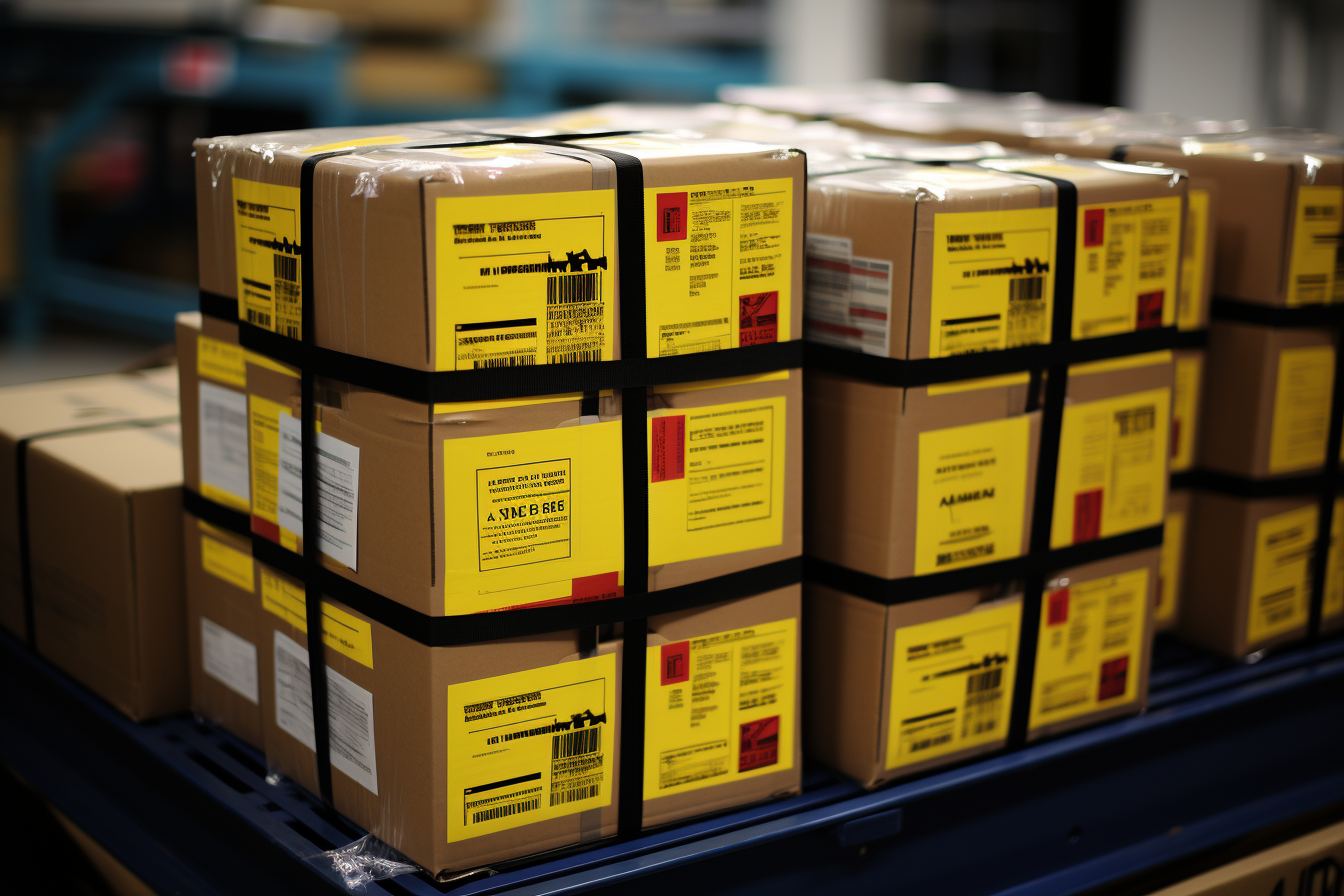Understanding FMCSA Hazardous Material Shipping
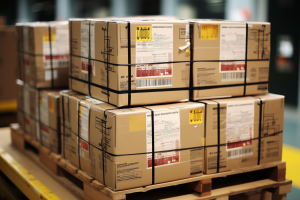
The pivotal role of hazmat shipping in America’s ecosystem.
Hazardous material shipping, especially under FMCSA regulations, plays a pivotal role in America’s dynamic shipping ecosystem. Trucks, serving as the backbone of this system, ensure the timely delivery of both routine and specialized goods. Among these, hazardous materials like explosives, gases, and flammable liquids demand special attention due to their inherent risks and the rigorous regulations governing their transport.
The Intricacies of Transporting High-Risk Cargo and Hazardous Material Classification
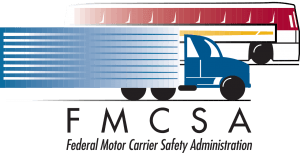
FMCSA’s guiding framework for hazmat classification.
Across America, truckers undertake the monumental task of transporting a diverse range of goods that power our daily lives. However, certain hazardous materials, due to their potential dangers, require an elevated level of care and expertise in hazardous material shipping. What makes these materials so challenging to transport, and how do trucking companies ensure their safe and compliant transit under FMCSA’s hazardous material classification?
FMCSA’s Detailed Hazardous Materials Classification
The Federal Motor Carrier Safety Administration (FMCSA) provides a clear framework for the classification of hazardous materials. Based on their potential risks and characteristics, these materials are segmented into nine crucial classes, emphasizing the importance of hazardous material classification:
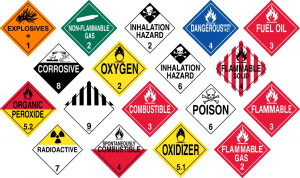
Safety for all: Understanding FMCSA’s hazmat classes.
Enjoying our insights?
Subscribe to our newsletter to keep up with the latest industry trends and developments.
Stay Informed- Class 1: Explosives
- Class 2: Gases
- Class 3: Flammable liquids
- Class 4: Flammable solids
- Class 5: Oxidizing substances and organic peroxides
- Class 6: Poisonous, toxic, and infectious substances
- Class 7: Radioactive material
- Class 8: Corrosives
- Class 9: Miscellaneous dangerous goods
Ensuring Hazmat Trucking Compliance: Duties of Shippers and Carriers
“The transportation of these hazardous materials is not just a task—it’s a profound responsibility.”
FMCSA delineates specific duties for both shippers and carriers to ensure the safe conveyance of these goods, emphasizing the importance of hazmat trucking compliance:
- Drafting accurate shipping documents
- Affixing the appropriate placards on the transporting vehicle
- Adhering to safe loading and unloading protocols
- Employing blocking and bracing techniques during transit
- Reporting any incidents without delay
- Conducting thorough training for employees on handling hazardous materials
Real-World Example: Ensuring Compliance in Hazmat Trucking
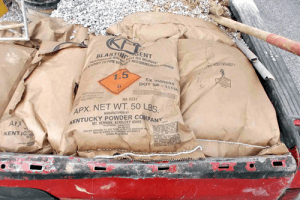
A truck hauling explosives deemed unsafe due to severe non-compliance.
The mission of the Federal Motor Carrier Safety Administration (FMCSA) is to improve truck and bus safety on our nation’s highways. This includes reducing the number of transportation incidents that involve hazardous materials which could potentially harm the public and the environment. Read more
Consequences of Regulatory Breaches in Hazardous Cargo Safety Protocols
Any deviation from the FMCSA and U.S. Department of Transportation’s stipulated regulations can result in significant penalties for not adhering to hazardous cargo safety protocols. Trucking companies could face:
- Civil penalties reaching up to $79,976
- Criminal charges, with fines up to $250,000 for individuals and a substantial $500,000 for corporate entities
Case Study: Cargo Tank Failure in Charleston, WV
On January 5, 2002, a tractor pulling a cargo tank semitrailer departed from a plant entrance, leading to a catastrophic failure. This incident underscores the importance of adhering to safety protocols and the potential consequences of breaches. Read more
Furthermore, any oversight or negligence in preparing hazardous materials for transport can lead to liability claims, encompassing personal injury or even wrongful death lawsuits.
Additional Resources on Hazmat Shipping and Related Topics
• For more news and updates on Compliance, check out this page.
• For additional insights into the challenges facing FleetSafety, explore this page.
• To delve into the intricacies of Regulations governing hazardous material shipping, follow this link.
• For insights into SafetyRegulations and best practices, explore this page.
• Stay abreast of the latest trends and updates in Shipping, click here.
• For a deep dive into the world of Transportation and its evolving landscape, follow this link.
• Explore resources and training modules for TruckDriverTraining, visit this link.
• Stay updated on the latest news and trends in the TruckingIndustry, check out this page.
The Imperative of Adherence in Hazardous Material Shipping

Educating communities on hazmat safety through awareness.
Compliance in hazardous material shipping is not merely about evading penalties. It’s about preserving lives, safeguarding the environment, and maintaining the trucking industry’s integrity. With the increasing prevalence of voice search queries like, “What are the regulations for hazardous material shipping?”, it’s evident that both industry professionals and the general populace are keen on understanding this vital topic.
Localized Impacts and the Evolving Landscape of Hazmat Shipping
With the expansion of urban centers and industries, the frequency of hazardous material shipments is set to rise. Local regulations, community awareness, and technological advancements will be instrumental in shaping the future trajectory of hazmat shipping.
Case Study: Insights from Cargo Tank Rollovers
The Pipeline and Hazardous Materials Safety Administration collaborated with U.S. DOT’s Volpe Center to investigate the causes behind 93 real-life hazmat tanker truck rollovers. These case studies provide valuable insights into the challenges faced in hazardous material shipping and the importance of staying updated with regulations. Read more
Staying Updated: Recent Regulatory Changes in Hazardous Material Shipping
FMCSA’s Decisive Stance on Emergency Exemptions
On October 13, 2023, the Federal Motor Carrier Safety Administration (FMCSA) unveiled a final rule concerning the scope of emergency exemptions. This rule refines the parameters of emergency exemption regulations, tailoring the safety regulations from which carriers and drivers can avail automatic relief during declared emergencies. The rule aims to ensure that the relief aligns with specific situations and emergencies. It also revises the process for extending automatic emergency regulatory relief and contemplates potential reporting requirements for such extensions. This rule is slated to be effective from December 12.
OMB’s Visionary Revisions for Grants and Agreements

The power of continuous training in hazmat safety.
On October 5, the Office of Management and Budget (OMB) proposed alterations to the OMB guidance for grants and agreements. These changes are designed to mirror OMB’s recent priorities concerning federal financial assistance and to enhance the management, transparency, and oversight of federal financial assistance. Stakeholders can provide feedback on these proposed changes until December 4.
U.S. Custom Harvesters Inc.’s Exemption Renewal
On October 11, FMCSA announced the tentative renewal of U.S. Custom Harvesters Inc.’s exemption request. This exemption allows custom harvester drivers with a “K” restriction on their Commercial Driver’s License (CDL) to operate across state lines. This exemption is valid from October 3, 2023, to October 3, 2025.
Reflecting on the Importance of Hazardous Material Shipping
Hazardous material shipping is more than just transporting goods; it’s about ensuring the safety of everyone involved, from the drivers to the general public. The regulations set by the FMCSA are not just guidelines but are crucial for maintaining the integrity of the transportation system. Every shipment has the potential to impact lives, and understanding the intricacies of these regulations ensures that risks are minimized.
The transportation of hazardous materials is a testament to the trust placed in the trucking industry. It’s a responsibility that demands expertise, diligence, and a commitment to safety above all else. As the world continues to evolve, so too will the challenges associated with hazardous material shipping. However, with continuous learning, adherence to regulations, and a proactive approach to safety, the industry is well-equipped to navigate these challenges and ensure the safe delivery of these critical materials.
By understanding the significance of hazardous material shipping and the regulations that govern it, we can appreciate the efforts of countless professionals who work tirelessly to ensure that these materials reach their destinations safely. Their dedication not only ensures the smooth functioning of various industries but also protects our communities and the environment.
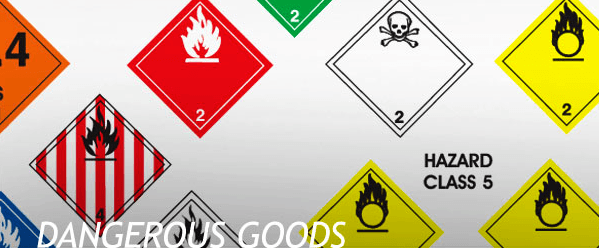
Hazmat shipping: A commitment to life and environment.
This sections provided links and sources offer in-depth information on various aspects of hazardous material transportation, from regulatory bodies to research studies. The insights and answers to specific questions highlight the challenges and solutions in this critical domain, with links to expert insights and opinions on the hazardous material shipping.
Decoding the Essentials: A Closer Look at the 9 Key Classes & Regulations in Hazardous Material Shipping
Hazardous materials, due to their potential risks, are meticulously classified by the Federal Motor Carrier Safety Administration (FMCSA). This classification system ensures that each type of hazardous material is handled, transported, and stored with the utmost care and in accordance with specific regulations. Here’s a breakdown of the nine pivotal classes:
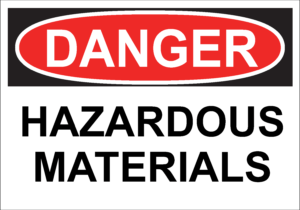
The inherent risks of transporting certain hazardous materials.
- Class 1: Explosives
- Materials that have the potential to detonate or explode. This class includes dynamite, fireworks, and ammunition.
- Class 2: Gases
- This class encompasses compressed, liquefied, or dissolved gases. Examples include propane, oxygen, and helium.
- Class 3: Flammable Liquids
- Liquids that can ignite easily, such as gasoline, alcohol, and certain types of paints.
- Class 4: Flammable Solids
- Solids that can ignite easily and pose a fire hazard. Examples include matches and certain types of fertilizers.
- Class 5: Oxidizing Substances and Organic Peroxides
- Materials that can cause or enhance the combustion of other materials. This includes bleach and certain types of acids.
- Class 6: Poisonous, Toxic, and Infectious Substances
- Materials that can pose a health risk if ingested, inhaled, or come into contact with skin. Examples are certain pesticides and infectious biological samples.
- Class 7: Radioactive Material
- Materials that emit ionizing radiation. This includes certain medical isotopes and nuclear fuel.h
- Class 8: Corrosives
- Substances that can cause severe damage when in contact with living tissue or can harm other materials. Examples include battery acid and certain industrial cleaners.
- Class 9: Miscellaneous Dangerous Goods
- Materials that pose risks not covered by other classes. This can include environmentally hazardous substances or items that are dangerous when transported.
Understanding these classes and their associated regulations is paramount for anyone involved in the shipping, handling, or transportation of hazardous materials. It ensures not only compliance with federal regulations but also the safety of all stakeholders, from truckers to the general public.
Essential Resources
- Federal Motor Carrier Safety Administration (FMCSA) Penalties: The FMCSA has periodically adjusted the fine amounts for trucking violations to reflect inflation. For instance, in 2021, the FMCSA increased the fine amount for trucking violations twice. Source
- Civil Penalty Amounts by FMCSA: The Federal Civil Penalties Inflation Adjustment Act Improvements Act of 2015 mandates the inflation adjustment to civil penalty amounts that may be imposed for violations of certain DOT regulations. The FMCSA is responsible for ensuring full compliance with all Federal Motor Carrier Safety Regulations (FMCSR) required of truck, bus, and motorcoach companies regulated by the U.S. Department of Transportation. Source
Navigating the Complexities: Insights into Hazardous Material Shipping
- Balancing Safety and Efficiency:
- How can FMCSA ensure that emergency exemptions don’t compromise the safety of hazardous material transportation?
- Answer: The FMCSA can implement rigorous assessment protocols before granting emergency exemptions. Regular audits and reviews of carriers benefiting from these exemptions can ensure they maintain safety standards. Additionally, feedback mechanisms can be established for real-time reporting of any safety concerns related to these exemptions.
- How can FMCSA ensure that emergency exemptions don’t compromise the safety of hazardous material transportation?
- Impact of Exemptions:
- What are the potential implications of granting exemptions like the one provided to U.S. Custom Harvesters Inc. on the overall safety of hazardous material transportation?
- Answer: Granting exemptions can lead to increased flexibility for carriers, but it also poses risks if not monitored closely. There’s a potential for misuse or complacency in adhering to safety protocols. However, with stringent oversight, regular safety checks, and ensuring that the exemptions are granted based on merit and genuine need, the risks can be minimized.
- What are the potential implications of granting exemptions like the one provided to U.S. Custom Harvesters Inc. on the overall safety of hazardous material transportation?
- The Role of Training:
- How can continuous training and refresher courses enhance the safety of hazardous material transportation?
- Answer: Continuous training ensures that all personnel are updated with the latest safety protocols, equipment usage, and regulatory changes. Refresher courses can help in reinforcing best practices, addressing any knowledge gaps, and ensuring that safety remains a top priority at all times.
- How can continuous training and refresher courses enhance the safety of hazardous material transportation?
- Technological Advancements:
- In what ways can technology be leveraged to further reduce incidents related to hazardous material transportation?
- Answer: Technology can play a pivotal role by introducing advanced tracking and monitoring systems for hazardous material shipments. Automated alerts for route deviations, real-time monitoring of cargo conditions, and predictive analytics to foresee and mitigate risks can significantly enhance safety.
- In what ways can technology be leveraged to further reduce incidents related to hazardous material transportation?
- Public Awareness:
- How can increased public awareness contribute to the safer transportation of hazardous materials?
- Answer: Public awareness campaigns can educate communities about the importance of hazardous material safety. An informed public can act as an additional layer of oversight, reporting any observed discrepancies or unsafe practices. Moreover, awareness can lead to community-driven initiatives that support and collaborate with trucking companies for safer operations.
- How can increased public awareness contribute to the safer transportation of hazardous materials?
Expert Insights on Hazardous Material Shipping and Navigating Safety Restrictions
- Hazardous Materials | FMCSA – Federal Motor Carrier Safety Administration
- Snippet: Transporting hazardous materials? Make sure you keep the load on the road and do your part to prevent cargo tank truck rollovers. Watch a training video here >> The mission of the Federal Motor Carrier Safety Administration (FMCSA) is to improve truck and bus safety on our nation’s highways.
- Link to the source
- How to Comply with Federal Hazardous Materials Regulations
- Snippet: The Secretary of the Department of Transportation receives the authority to regulate the transportation of hazardous materials from the Hazardous Materials Transportation Act (HMTA), as amended and codified in 49 U.S.C. 5101 et seq. The Secretary is authorized to issue regulations to implement the requirements of 49 U.S.C.
- Link to the source
- The challenges of transporting hazardous materials – FleetPoint
- Snippet: Transporting hazardous materials poses several challenges for businesses, making it crucial that logistics providers consider effective route optimisation and scheduling software from the outset. Moving dangerous loads not only requires great care and caution, but also needs to be meticulously planned in order to meet numerous safety restrictions.
- Link to the source
Resources on Insights
- Risk Assessment of Hazardous Materials Transportation: Hazardous materials (hazmat) are substances that can be flammable, explosive, poisonous, or radioactive. Mishandling during transportation can lead to combustion, explosion, leakage, and other accidents, posing significant threats to public safety and the environment. Source
- Safety Function Deployment Approach: A study that integrates the quality function deployment (QFD) and risk assessment to identify potential risks and find critical safety barriers for HazMat highway transportation. Source
- Review on HAZMAT Transportation: A comprehensive review of the recent literature on HAZMAT transportation, emphasizing the need for more data analysis and strengthening all aspects involved in HAZMAT research. Source
- Hazardous Material Transportation Problems: This source discusses measures defined to reduce the impact of hazmat incidents on the population and ensure equity in risk distribution. Source
- Cooperative Research for Hazardous Materials Transportation: This report describes the shared responsibilities of various stakeholders in building a safe and secure system of hazardous materials transportation. Source
This section encompasses FAQs about FMCSA’s hazardous material shipping, a glossary of essential terms, and links to authoritative external resources on the topic.
Frequently Asked Questions (FAQs) about FMCSA Hazardous Material Shipping
- What is the FMCSA’s role in hazardous material shipping?
- The Federal Motor Carrier Safety Administration (FMCSA) is responsible for regulating and ensuring the safe transportation of hazardous materials by commercial motor vehicles.
- How are hazardous materials classified by the FMCSA?
- The FMCSA classifies hazardous materials into nine distinct classes based on their potential risks and characteristics.
- What are the penalties for non-compliance with FMCSA regulations?
- Non-compliance can result in civil penalties reaching up to $79,976, and criminal charges with fines up to $250,000 for individuals and $500,000 for corporate entities.
- How does FMCSA ensure the safety of hazardous material transportation during emergencies?
- The FMCSA has provisions for emergency exemptions, which are granted after rigorous assessment to ensure that safety standards are maintained.
- What training is required for drivers transporting hazardous materials?
- Drivers must undergo specialized training on handling hazardous materials, which includes understanding the classifications, proper documentation, and emergency response procedures.
Glossary of Terms
- FMCSA: Federal Motor Carrier Safety Administration – The lead federal government agency responsible for regulating and providing safety oversight of commercial motor vehicles.
- Hazmat: Hazardous Materials – Items or agents which have the potential to cause harm to humans, animals, or the environment, either by themselves or through interaction with other factors.
- Placards: Signage affixed to the transporting vehicle indicating the type of hazardous material being transported.
- Compliance: Adherence to laws, regulations, guidelines, and specifications relevant to the business or activity.
- Exemption: An official permission to be released from a rule or requirement.
- Cargo Tank: A bulk packaging that is a tank intended primarily for the carriage of liquids or gases and includes all appurtenances, reinforcements, fittings, and closures.
External Resources on FMCSA’s Hazardous Material Shipping Regulations
- Federal Motor Carrier Safety Administration (FMCSA): Learn more about their mission, history, and the areas they cover related to hazardous material shipping. Visit the FMCSA Official Site
- U.S. Department of Transportation (DOT): Find information on their services, history, and commitment to ensuring the safe transportation of hazardous materials. Explore the DOT Official Site
- Pipeline and Hazardous Materials Safety Administration (PHMSA): Understand the regulations and laws specific to the transportation of hazardous materials. Check out the PHMSA Official Site
- National Institute for Occupational Safety and Health (NIOSH): Gain insights into the safety protocols and guidelines for transporting hazardous materials. Visit the NIOSH Official Site
- Environmental Protection Agency (EPA): Discover the environmental impacts and guidelines associated with hazardous material shipping. See the EPA Official Site

